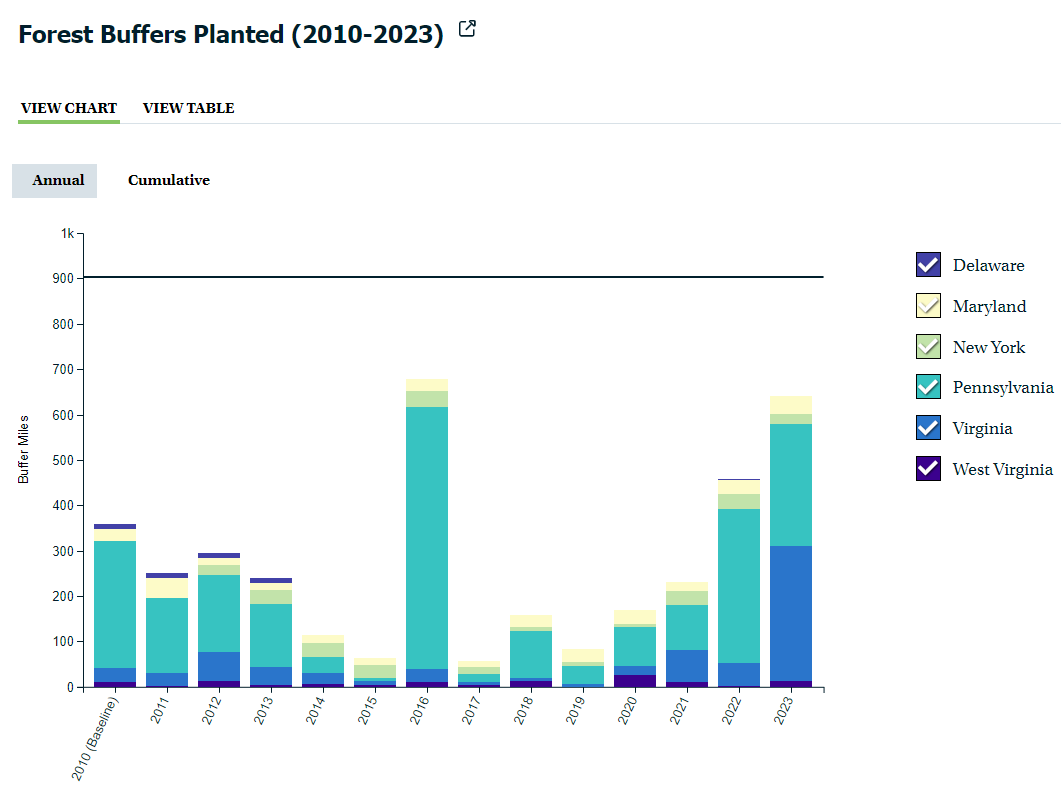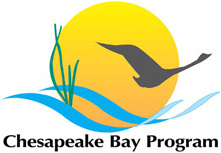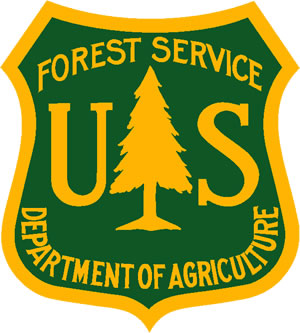What Are Riparian Forest Buffers and Why Are They Important?
Riparian forest buffers (RFBs) are strips of forest that border waterways. RFBs act as natural filters for rivers, streams, and ultimately the Chesapeake Bay, as they effectively remove pollutants from runoff. Forest buffers are among the most cost-effective practices to improve water quality and to restore a sustainable landscape that supports clean water, native fish and wildlife, and resiliency to climate change. Restoring RFBs is a high priority of the Chesapeake Bay Watershed Agreement, which sets ambitious goals.
Riparian Forest Buffer Planting in the Chesapeake Bay Watershed
This map shows acres of agricultural and urban riparian forest buffers as reported to the Chesapeake Bay Program in 2023. Click on the county to see new buffers installed in 2023 and total acres enrolled to date.
Progress for riparian forest buffers was calculated using the Chesapeake Assessment and Scenario Tool (CAST). Please contact Katie Brownson (Katherine.brownson@usda.gov) if you would like access to the data used to calculate annual and cumulative progress numbers in CAST.
Chesapeake Progress tracks annual and cumulative forest buffer planting by year and state. Explore the data by clicking on the image below. (Retrieved from Chesapeake Progress and adapted for visibility)



